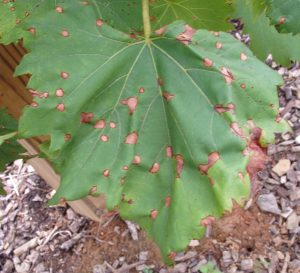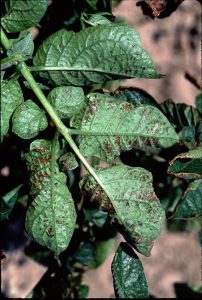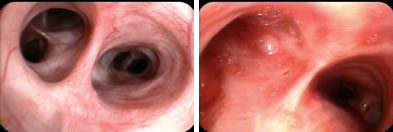Ground Level Ozone Overview
Oxygen + NOx + VOCs + Sun = Ozone
Ground-level ozone is an air pollutant known to cause a number of health effects and negatively impact air quality and the environment in the state of New Jersey. Ozone is formed when oxides of nitrogen (NOx) and volatile organic compounds (VOCs) react in the presence of sunlight. Ozone can irritate any set of lungs, but those with lung-related deficiencies should take extra precautions on bad ozone days.
The Your Air Quality Today tab on this page tells you how to sign up to receive notifications and find out when your local air has reached unhealthy ozone levels. Since each ozone episode is different, depending on a number of meteorological and air quality factors, you can find out the specifics on ozone exceedances in New Jersey’s non-attainment areas this year by clicking the Ozone Exceedances tab.
Good v. Bad Ozone
Ozone is a gas that occurs both in the Earth’s upper atmosphere and at ground level. Ozone can be “good” or “bad” for your health and the environment, depending on its location in the atmosphere.
What is Ozone Season?
Ground-level ozone needs sunlight to form, therefore it is mainly a daytime problem during the summer months. The length of the ozone monitoring season varies across the country according to a number of seasonally-dependent factors (e.g., ambient temperature, strength of incoming solar radiation, length of day, etc.) that affect ozone formation. Weather patterns have a significant effect on ozone formation and hot, dry summers will result in more ozone formation than cool, wet ones. In New Jersey, the ozone monitoring season runs from March 1st to October 31st.
Why is it Worse in Summer? Understanding the Link Between Weather and Ozone Formation
Ground-level ozone can be a summertime air pollution problem in the region, and weather plays a key role in the levels of ozone that we experience. Meteorologists and other weather professionals and enthusiasts can help educate the public about ozone’s health effects, and provide tips on minimizing exposure to ozone and simple actions to take that reduce ozone formation.
Health Effects of Ground-Level Ozone
Ground-level ozone is harmful to our health and the environment. Ozone damages lung tissue and reduces the lung’s ability to work properly. As the air enters the lungs, ozone irritates the lining of the lungs’ passageways. The resulting swelling in the lungs makes it more difficult to breathe, in addition to causing muscle spasms and excess mucus.
Exposure to ozone also makes the lungs more vulnerable to lung-related illnesses, such as pneumonia and bronchitis. People with asthma are particularly vulnerable when ground-level ozone levels are high, but even healthy adults and children are vulnerable. Exposure to ozone for several hours can significantly reduce lung function and increase lung inflammation during exercise.
Environmental Effects
Plants and other ecological systems are also susceptible to ground-level ozone. Ozone can cause discoloration and damage to plants by impacting the natural photosynthesis process. In addition, the ozone precursor oxides of nitrogen (NOx) can cause rainfall to become highly acidic (otherwise known as acid rain), which damages the leaves and structure of plants during rain events.
Haze is caused when sunlight encounters tiny particles in the air, including nitrates. Some light is absorbed by these particles in the air; while other light is scattered away before it reaches an observer. More pollutants in the air causes more absorption and scattering of light, which reduce the clarity and color of what we see. Learn more about regional haze here.


Federal Standards for Ozone
New Jersey is required to meet air quality standards established by the United States Environmental Protection Agency (USEPA). These standards are known as National Ambient Air Quality Standards (NAAQS). For more information see National Ambient Air Quality Standards.
What You Can Do About Ozone
Tips to help you avoid ozone exposure:
- Be informed on local air quality in your area:
-
- To learn more about the United States Environmental Protection Agency Air Quality Index (USEPA AQI) see NJDEP| Air Planning | AQI Today
-
- Subscribe to EnviroFlash at EnviroFlash – Sign-Up to receive information on your local air quality forecasts and when ozone or fine particulate air quality is predicted to be unhealthy.
- Don’t exercise mid-day on poor air quality days.
- Move outdoor activities to a day with better air quality or move the activities to the early morning or late evening.
- Consider having an “ozone” date, similar to a “rain” date, for outdoor events.
Tips to help reduce ozone formation:

